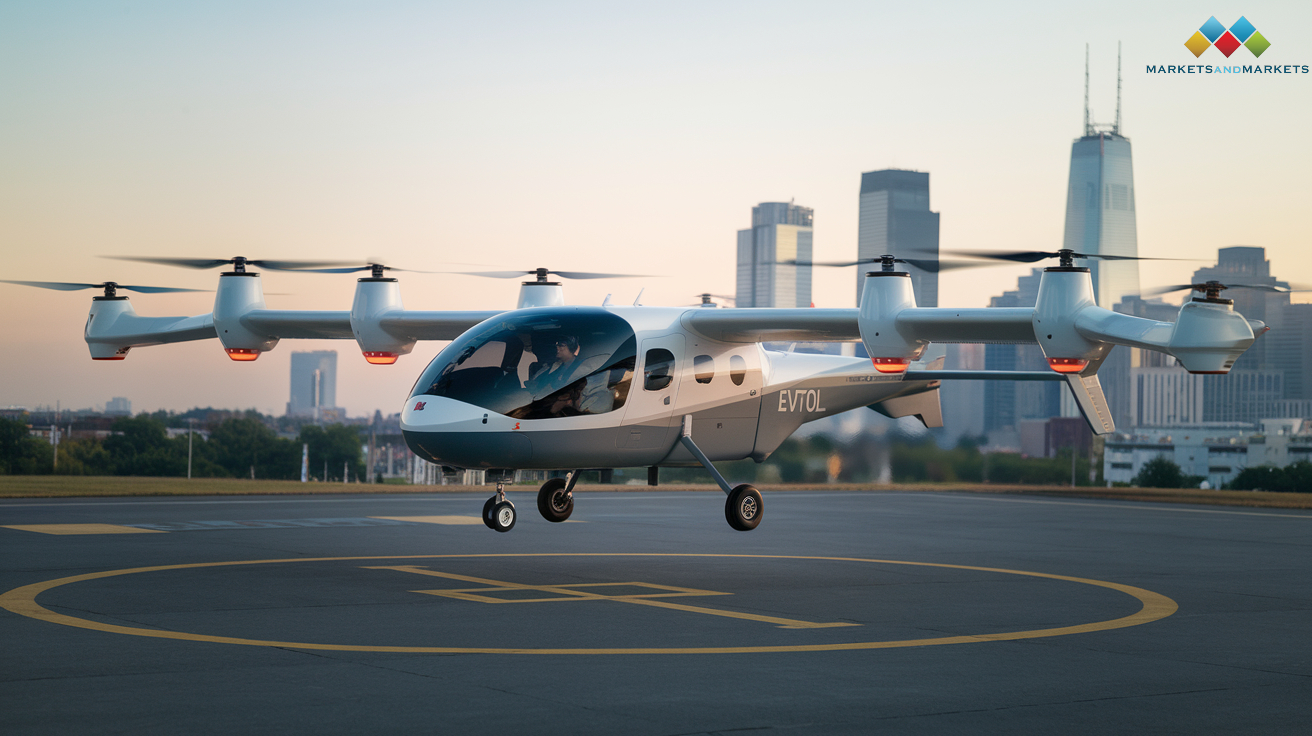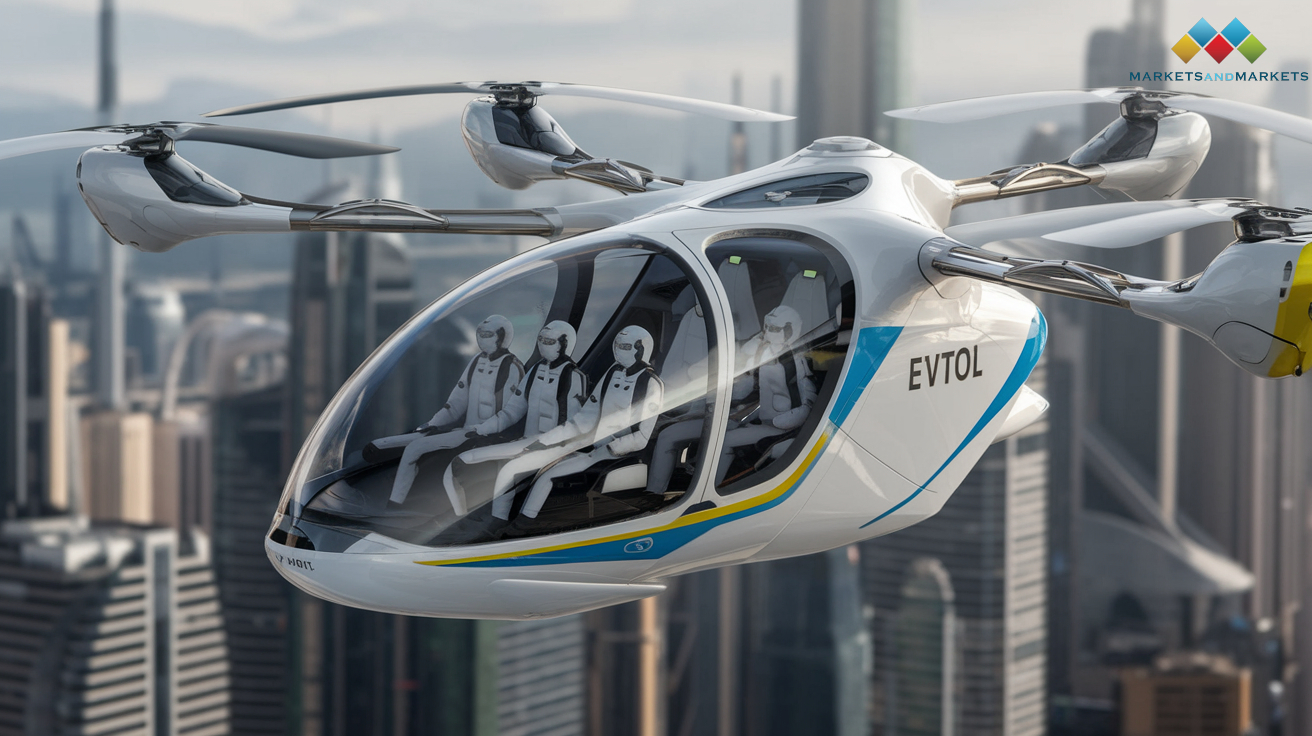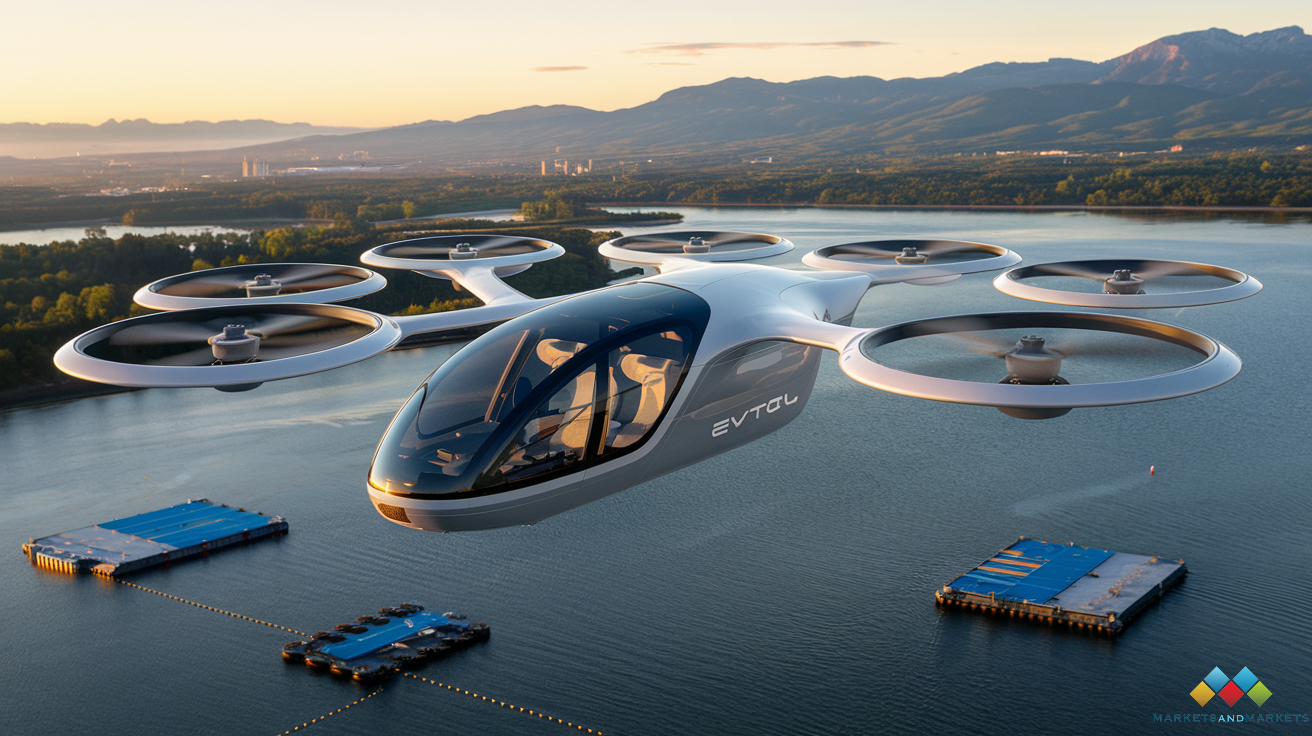The Electric Vertical Take-Off and Landing (eVTOL) aircraft is a groundbreaking innovation in the aviation industry, designed to transport passengers and cargo with the flexibility of helicopter-like vertical take-offs and landings, but with the added benefit of being electrically powered. These aircraft represent a significant step towards the future of urban air mobility, offering efficient, quiet, and environmentally friendly alternatives to traditional aircraft. eVTOLs are envisioned to play a crucial role in reducing urban congestion, providing faster transportation solutions within cities, and contributing to the global push for more sustainable transportation systems.
Market Overview: The eVTOL Aircraft Market is poised for exponential growth, increasing from USD 1.2 billion in 2023 to an impressive USD 23.4 billion by 2030. This growth is driven by advancements in electric propulsion, increasing urban air mobility needs, and environmental concerns, propelling demand for more efficient, electric-powered aircraft. The CAGR of 52.0% highlights a dynamic and rapidly evolving industry.
The global push for greener, more sustainable transportation has been a key driver of innovation in recent years. As urbanization accelerates and cities become more congested, traditional forms of transportation are becoming less efficient. This has led to the rise of new solutions like eVTOL aircraft, which promise to revolutionize the way people travel within cities. By offering point-to-point travel in urban areas, eVTOLs can reduce road congestion, lower emissions, and provide a faster, more convenient alternative to ground-based transportation.
Key Technologies:
- Lift + Cruise Technology: The fastest-growing segment within the eVTOL market. This technology, which separates vertical lift and forward propulsion, offers enhanced flight efficiency. It allows eVTOLs to transition smoothly between vertical take-off and horizontal flight, contributing to its dominance in market share by 2023.
- Vectored Thrust: Utilizing independent motor or propeller control to create multidirectional thrust, this technology supports enhanced agility, seamless hovering, and improved maneuverability in eVTOL aircraft. This versatile technology is particularly vital for urban air mobility, where quick, agile movements are essential for congested urban airspaces.
Propulsion Types:
- Fully Electric Propulsion: Expected to dominate the market through 2030, fully electric eVTOLs provide an eco-friendly alternative to traditional aircraft. Advances in battery technology and energy density improvements are supporting this trend, making fully electric propulsion the largest segment in the eVTOL market.
- Hybrid & Electric Hydrogen Propulsion: Though less prevalent, these propulsion methods offer extended range capabilities and are particularly promising for longer-distance eVTOL applications.

Autonomy in Operation: The eVTOL market is also witnessing a shift from piloted to autonomous systems. Autonomous eVTOLs, anticipated to account for the largest market share, eliminate human intervention, providing greater payload capacity, increased propulsion, and advanced safety features such as GPS-denied technology and autonomous “detect and avoid” systems. These aircraft will cater to urban air mobility, cargo transport, and emergency services.
The shift towards autonomous technology is not limited to the aviation industry. Across sectors, automation is becoming more prevalent as companies strive to improve efficiency, safety, and scalability. In the context of eVTOLs, autonomy allows for precise navigation, efficient energy usage, and minimal human error, which is crucial in complex urban environments where safety and reliability are paramount.
eVTOL Aircraft Industry Opportunities: The eVTOL aircraft industry presents numerous opportunities across multiple sectors, including urban air mobility, cargo transport, and emergency services. As cities face increasing congestion and environmental regulations become stricter, eVTOLs offer a sustainable, fast, and efficient solution for short-haul flights within urban areas. With technological advancements in electric propulsion systems, battery efficiency, and autonomous flight capabilities, companies can capitalize on the growing demand for eco-friendly transportation. Additionally, eVTOLs hold promise for industries like healthcare, where they can be used for rapid medical transport, and logistics, providing quicker delivery options in densely populated areas. Governments and private investors are increasingly interested in developing infrastructure to support this growing market, making it a fertile ground for innovation and investment.
Regional Insights:
- Europe: Expected to grow at the highest CAGR due to increasing commercial air travel, disposable income, and military adoption of UAVs (unmanned aerial vehicles). Hybrid and electric propulsion technologies are being actively developed, positioning Europe as a key player in the global eVTOL industry.
Market Drivers:
- Increasing focus on urban air mobility solutions to address urban congestion and reduce carbon emissions.
- Advancements in electric propulsion and battery technologies.
- Growing investments from governments and private players in eVTOL development, particularly in Europe and North America.
Key Market Leaders in eVTOL Aircraft Industry: Key players dominating this space include Airbus SE, Ehang Holdings Ltd., Joby Aviation, Inc., Volocopter GmbH, and Lilium GmbH. These companies are at the forefront of eVTOL technology, focusing on innovation in propulsion, autonomy, and urban air mobility solutions.
Market Challenges:
- Regulatory hurdles around airspace management, particularly in urban environments.
- Safety and certification standards for autonomous aircraft.
- Battery life and energy density limitations, which may restrict flight range and payload capacity.
Future of the eVTOL Aircraft Market: The future of the eVTOL aircraft market is promising, with exponential growth expected through 2030 and beyond. As battery technology continues to evolve, extending range and reducing costs, eVTOLs are likely to become more accessible and integrated into everyday transportation systems. Urban air mobility is projected to become a standard mode of travel in megacities, supported by advancements in autonomous flight technologies, real-time air traffic management, and regulatory frameworks. Additionally, the shift towards electric propulsion aligns with global efforts to reduce carbon emissions, making eVTOLs a critical part of future sustainable transportation networks. In the long term, eVTOL aircraft could revolutionize industries such as logistics, defense, and healthcare, while transforming how people move within and between cities.


